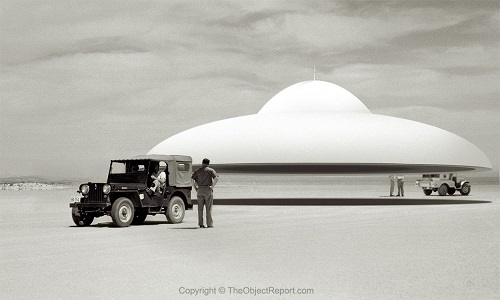Scareships

The mysterious wave of airship sightings that took place over America in 1896 and 1897 were mirrored by a series of sightings that took place in Britain, starting in 1909.
One of the first of these so-called ‘scareship’ sightings occurred in the early hours of 23 March 1909, when PC Kettle from Peterborough heard a strange buzzing sound from above. When he looked up, he saw a bright light attached to an immense, oblong-shaped craft, which moved at a fairly high speed across the sky. Numerous further sightings were reported.
On 13 May 1909 an airship of about 100 feet in length was seen over Kelmarsh in Northamptonshire, while on the same night two men claimed to have seen a landed airship on Ham Common in London and spoken to the two crewmen, who they said were German and American. The German asked for some tobacco for his pipe and the two witnesses reported having been blinded by a searchlight during some of the sighting.
Another report of a landed airship concerned an event that took place on 18 May 1909, on Caerphilly Mountain in South Wales. The witness reported having seen two strangely-dressed occupants who he heard talking to each other in a strange language that he was unable to identify. A subsequent examination of the alleged landing site revealed some damage to the ground.
The public perception was that these were sightings of German airships carrying out reconnaissance missions. But there is no indication that Count Ferdinand von Zeppelin’s airship programme was sufficiently advanced in 1909 to conduct such operations over the UK. In any case, German airships of the period could manage nothing remotely close to the sorts of speeds and manoeuvres that were being reported.
The British airship programme was significantly less advanced than the German one, so we do not believe that the ‘scareship’ mystery can be explained in terms of prototype British military hardware with which members of the public would be unfamiliar.
To this day these sightings remain unexplained. Further information can be found in The Scareship Mystery – A Survey of Phantom Airship Scares, 1909 – 1918, edited by Nigel Watson.
Our reason for mentioning these sightings is that they mark the beginning of official interest in unexplained aerial phenomena. The 1909 wave was followed by further reports in 1912 and this is where our story begins in earnest. There had been sightings of an airship over Sheerness in Kent and with tension between Britain and Germany being so high, it was suggested that a Zeppelin was involved.
On 27 November 1912 William Joynson-Hicks MP raised the matter in Parliament and quizzed the First Lord of the Admiralty about the events. The latter confirmed that reports had been received, but said that subsequent investigation had not produced any explanation for what had been seen. The First Lord of the Admiralty at the time was Winston Churchill.
Sightings continued throughout 1913 and one consequence of this was the strengthening of the Aerial Navigation Act of 1911. A Bill was duly passed which set up prohibited areas. If these were violated or if an airship failed to respond to signals from the ground, it could then be shot down and to enable this to be carried out, the War Office stepped up efforts to produce a gun capable of bringing down an airship. The War Office continued to investigate the 1913 sightings, but drew a blank.
While the media championed the theory that these sightings involved German dirigibles, some newspapers suspected that hoaxes or hysteria might be more logical explanations, especially in the cases of those reports involving sightings of landed craft and occupants.
Crucially, however, the Government was not prepared to make such a judgement and continued to take the view that all sightings should be investigated. If there is evidence that your airspace is being penetrated by aerial craft one does not ignore the data.
Whatever one’s personal beliefs, anyone within government and the military cannot ignore evidence of this nature and must assume that they are hostile. If governments investigate such things and they turn out to be bogus, all they lose is a little time and money.
But if they ignore something that turns out to be real and hostile, they leave the country vulnerable, as well losing the opportunity to exploit it (e.g. copying the technology).
This philosophy underpins official interest not just in UFOs but in other areas such as remote viewing, so in a sense the War Office response to the scareship mystery set the template for future official investigations into UFOs.
written by Nick Pope



 Creators of mankind
Creators of mankind Description of “Tall white aliens”
Description of “Tall white aliens” Where they came from?
Where they came from? About hostile civilizations
About hostile civilizations The war for the Earth
The war for the Earth “Tall white aliens” about eternal life
“Tall white aliens” about eternal life Video: “Nordic aliens”
Video: “Nordic aliens” Aliens
Aliens Alien encounters
Alien encounters The aliens base
The aliens base UFO
UFO Technology UFO
Technology UFO Underground civilization
Underground civilization Ancient alien artifacts
Ancient alien artifacts Military and UFO
Military and UFO Mysteries and hypotheses
Mysteries and hypotheses Scientific facts
Scientific facts


















